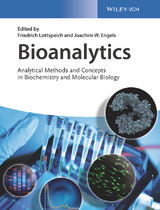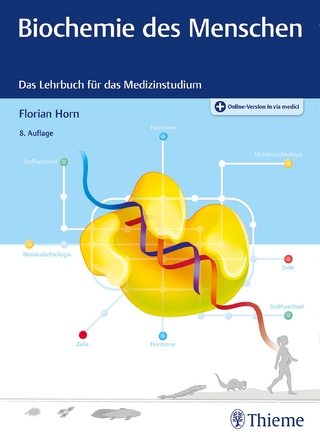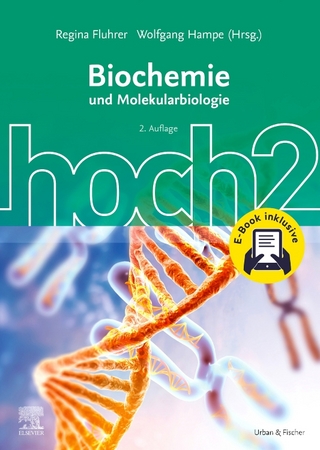Bioanalytics
Analytical methods are the essential enabling tools of the modern biosciences. This book presents a comprehensive introduction into these analytical methods, including their physical and chemical backgrounds, as well as a discussion of the strengths and weakness of each method. It covers all major techniques for the determination and experimental analysis of biological macromolecules, including proteins, carbohydrates, lipids and nucleic acids.
The presentation includes frequent cross-references in order to highlight the many connections between different techniques. The book provides a bird's eye view of the entire subject and enables the reader to select the most appropriate method for any given bioanalytical challenge. This makes the book a handy resource for students and researchers in setting up and evaluating experimental research. The depth of the analysis and the comprehensive nature of the coverage mean that there is also a great deal of new material, even for experienced experimentalists.
The following techniques are covered in detail:
- Purification and determination of proteins
- Measuring enzymatic activity
- Microcalorimetry
- Immunoassays, affinity chromatography and other immunological methods
- Cross-linking, cleavage, and chemical modification of proteins
- Light microscopy, electron microscopy and atomic force microscopy
- Chromatographic and electrophoretic techniques
- Protein sequence and composition analysis
- Mass spectrometry methods
- Measuring protein-protein interactions
- Biosensors
- NMR and EPR of biomolecules
- Electron microscopy and X-ray structure analysis
- Carbohydrate and lipid analysis
- Analysis of posttranslational modifications
- Isolation and determination of nucleic acids
- DNA hybridization techniques
- Polymerase chain reaction techniques
- Protein sequence and composition analysis
- DNA sequence and epigenetic modification analysis
- Analysis of protein-nucleic acid interactions
- Analysis of sequence data
- Proteomics, metabolomics, peptidomics and toponomics
- Chemical biology
Friedrich Lottspeich studied chemistry in Vienna and performed his dissertation at the Max-Planck Institute of Biochemistry in Munich. He received his PhD in biochemistry from the University of Vienna. After habilitation in Munich and Innsbruck, Friedrich Lottspeich was head of the protein analytics group at the Max-Planck Institute of Biochemistry in Munich until his retirement in 2013. His research focused on the development and application of methods for the analysis of proteins. Friedrich Lottspeich is author of more than 750 original publications and is a former President of EUPA and DGPF. He received several international prizes such as the ASAC Pregl Medal 2009, the DGMS Award Mass spectrometry in Life Sciences 2012, the AUPA Life Achievement Award 2014 and the EUPA Juan Pablo Albar Proteomics Award 2016.
Joachim W. Engels studied chemistry in Berlin and Munich and received a Ph.D. in Regensburg. He carried out post-doctoral studies at Stanford, did his habilitation in Konstanz and was a visiting scientist at the University of Colorado before joining the company Hoechst in 1981, where he developed gene synthesis. He is a full Professor of Biological Chemistry at the Goethe-University of Frankfurt since 1985. His interests range from chemical biology to bioanalytics. Joachim Engels has served as president of the International Society of Nucleotides and Nucleic Acids (2005/6), held several guest professorships at Chiba Institute, Japan (1989), Hokkaido University, Japan (1998) Shandong University, China (2004), Cady-Ayyad University, Morocco (2010), University Witwatersrand, South Africa (2012). He has authored more than 300 original publications. On retirement, he was chosen Professor Emeritus and he is now President of the Goethe-Wissenschaftliche Gesellschaft (Academy) in Frankfurt.
Part I: PROTEIN ANALYTICS
Protein purification
Protein determination
Enzymatic activity tests
Microcalorimetry
Imunological Techniques
Cheminal modification of proteins and protein complexes
Spectroscopy
Light microscopy - Imaging
Cleavage of proteins
Chromatographic techniques
Electrophoretic techniques
Capillary electrophoresis
Amino acid analysis
Protein seqeunce analysis
Mass spectrometry
Protein protein interactions
The Two-Hybrid System
TAP-Tagging and Purification of Protein Complexes
Analyzing Interactions In Vitro: GST-Pulldown
Surface Plasmon Resonance Spectroscopy
Fluorescence Resonance Energy Transfer (FRET)
Analytical Ultracentrifugation
Analytical Ultracentrifugation
Biosensors
Part II: 3D STRUCTURE DETERMINATION
NMR
EPR
Electron microscopy
Atomic force microscopy
X-ray structrure analysis
Part III: PEPTIDES, CARBOHYDRATES, AND LIPIDS
Analysis of synthetic peptides
Carbohydrate analysis
Lipid analysis
Analysis of posttranslational modifications
Part IV: NUCLEIC ACID ANALYTICS
Isolation and Purification of Nucleic Acids
Analysis of Nucleic Acids
Restriction analysis
Electrophoresis
LC-MS of Oligonucleotides
LC-MS of Oligonucleotides
Techniques for the Hybridization and Detection of Nucleic Acids
Polymerase chain reaction
DNA sequencing
Analysis of epigenetic modifications
Protein nucleic acid interactions
Part V: FUNCTIONAL AND SYSTEMS ANALYTICS
Sequence analysis by bioinformatics
Analysis of promotor strength
Hybridization of fluorescent DNA for genome analysis in molecular cytogenetic
Physical and genetic mapping of genomes
DNA microarray techmology
The Use of oligonucleotides as tools in cell biology
Proteome analysis
Metabolomics and peptidomics
Interactomics - systematic protein protein interactions
Chemical Biology
Toponome Analysis
Mass Spectrometric Imaging
| Erscheint lt. Verlag | 14.3.2018 |
|---|---|
| Sprache | englisch |
| Maße | 210 x 276 mm |
| Gewicht | 2874 g |
| Einbandart | gebunden |
| Themenwelt | Studium ► 1. Studienabschnitt (Vorklinik) ► Biochemie / Molekularbiologie |
| Naturwissenschaften ► Biologie ► Allgemeines / Lexika | |
| Naturwissenschaften ► Biologie ► Biochemie | |
| Naturwissenschaften ► Biologie ► Genetik / Molekularbiologie | |
| Naturwissenschaften ► Chemie ► Analytische Chemie | |
| Naturwissenschaften ► Chemie ► Organische Chemie | |
| Technik ► Umwelttechnik / Biotechnologie | |
| Schlagworte | Bioanalytical Chemistry • Bioanalytik; Handbuch/Lehrbuch • Bioanalytische Chemie • Biochemie • Biochemie; Handbuch/Lehrbuch • Biochemie u. Chemische Biologie • biochemistry • Biochemistry (Chemical Biology) • Biowissenschaften • Cell & Molecular Biology • Chemie • Chemistry • Life Sciences • Molekularbiologie • Molekularbiologie; Handbuch/Lehrbuch • Zell- u. Molekularbiologie |
| ISBN-10 | 3-527-33919-1 / 3527339191 |
| ISBN-13 | 978-3-527-33919-8 / 9783527339198 |
| Zustand | Neuware |
| Informationen gemäß Produktsicherheitsverordnung (GPSR) | |
| Haben Sie eine Frage zum Produkt? |
aus dem Bereich




